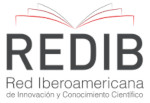Intervalo entre a colheita e ensilagem do milho sobre a ingestão, comportamento ingestivo e características fisiológicas em ovinos
DOI:
https://doi.org/10.17648/diversitas-journal-v6i2-1386Abstract
ABSTRACT: The Northeastern semiarid region has a large number of small and medium-sized sheep-dependent producers. A practice that minimizes and can guarantee production in climatic conditions in semiarid regions is the ensilage process. In this sense, the objective was to evaluate the consumption, ingestive behavior and physiological characteristic of sheep fed with corn silage (Zea mays) made with increasing periods of ensilage times after harvest. Twenty sheep with an average body weight of 28 kg were used, the experimental diet contained a roughage/concentrate ratio of 70:30, calculated for an average daily gain of 150g / day, four treatments were evaluated (0; 12; 24 and 48h for ensilage after forage cut) and five replicates in a completely randomized design. The dry matter (DM) contents of the diets were 457; 474.7; 458.8 and 461.3 g / kg in the natural matter (MN) for treatments 0; 12; 24 and 48 h, respectively, as well as for neutral detergent fiber (NDF) with 399.8; 430.4; 482.1 and 491.1 g / kg DM. A quadratic effect was observed for the variables of consumption of DM (P = 0.0077) and NDF (P = 0.0015), for water intake an increasing linear effect was observed (P = 0.0048). The data referring to the efficiencies also showed a quadratic effect, as for the ingestive behavioral were not influenced by the treatments (P> 0.05), as well as the physiological characteristic of heart and respiratory rate as for the rectal temperature of the sheep. The effect of ensilage time for making corn silages after cutting the field showed a reduction in the consumption of DM and NDF, but increased the intake of drinking water, with the operation of ensilage being recommended within up to 24 hours. be used to feed SRD sheep.
KEYWORDS: Fermentation, sheep, animal production, Semiarid.
Metrics
Downloads
Published
How to Cite
Issue
Section
License
Copyright (c) 2021 Deneson Oliveira Lima, Cleyton de Almeida Araújo, André Marques Torres, Ana Paula Maia dos Santos, Maria Telma de Aquino Rodrigues, Joyce Ramos da Silva, Monalisa Pereira da Silva, Carolina Corrêa de Figueiredo Monteiro

This work is licensed under a Creative Commons Attribution 4.0 International License.
The Diversitas Journal expresses that the articles are the sole responsibility of the Authors, who are familiar with Brazilian and international legislation.
Articles are peer-reviewed and care should be taken to warn of the possible incidence of plagiarism. However, plagiarism is an indisputable action by the authors.
The violation of copyright is a crime, provided for in article 184 of the Brazilian Penal Code: “Art. 184 Violating copyright and related rights: Penalty - detention, from 3 (three) months to 1 (one) year, or fine. § 1 If the violation consists of total or partial reproduction, for the purpose of direct or indirect profit, by any means or process, of intellectual work, interpretation, performance or phonogram, without the express authorization of the author, the performer, the producer , as the case may be, or whoever represents them: Penalty - imprisonment, from 2 (two) to 4 (four) years, and a fine. ”


















